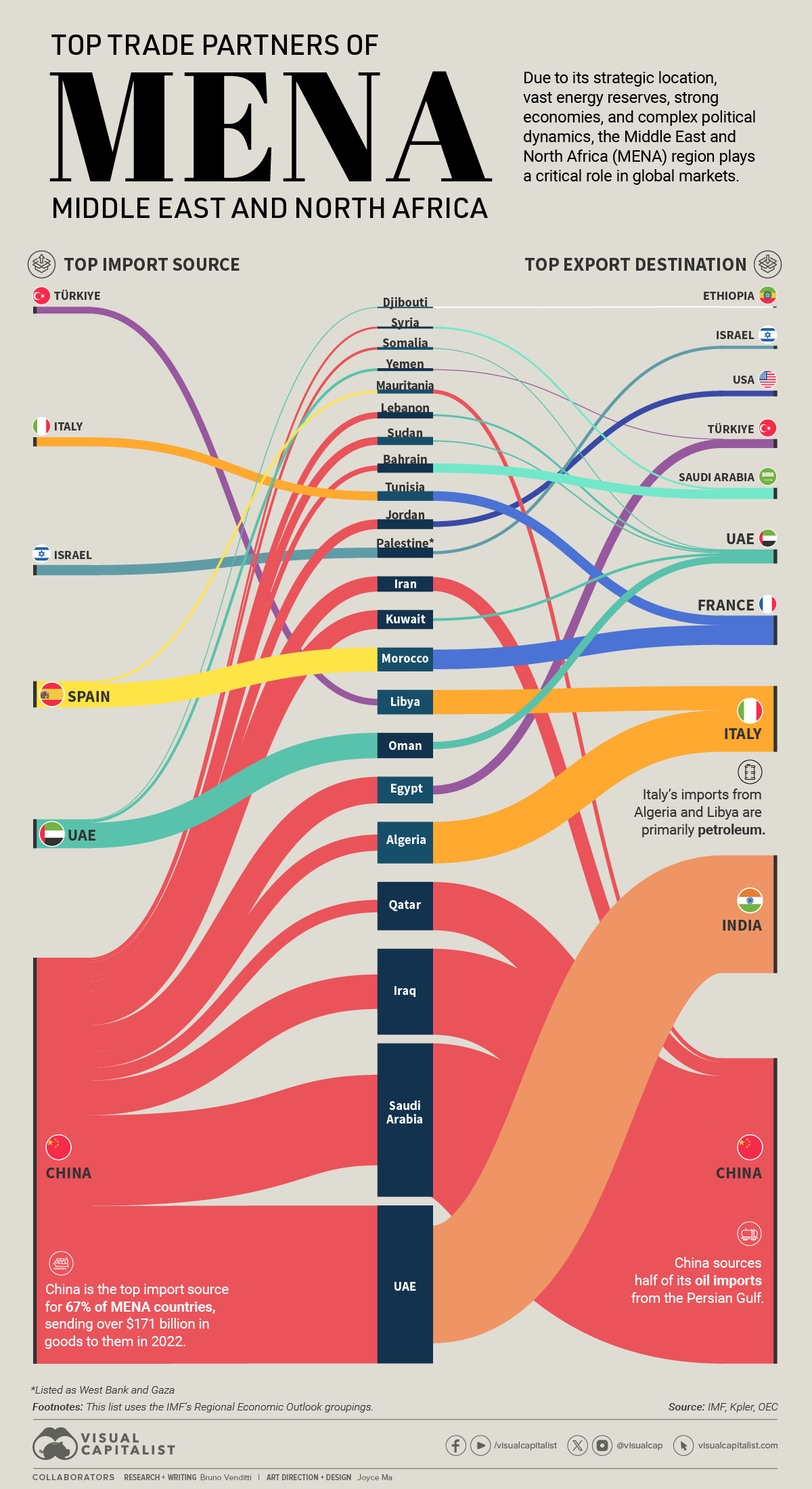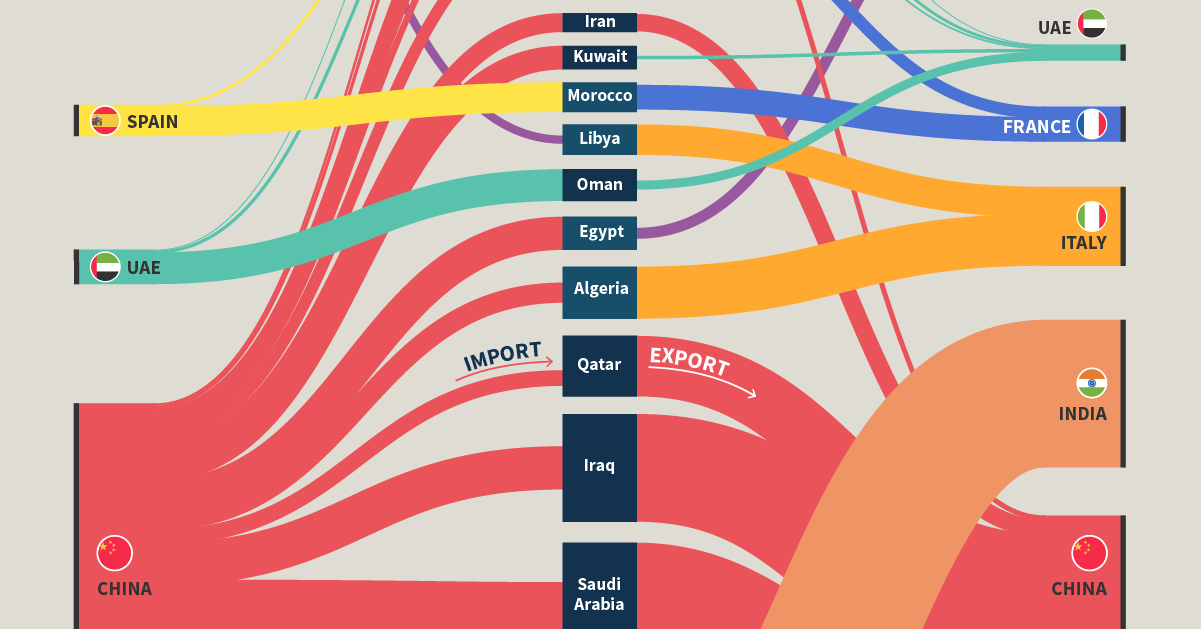Beijingwalker
Senior Member
- Jan 27, 2024
- 69,455
- 37
- Origin

- Residence

- Axis Group

Visualizing the Top Trading Partners of MENA Countries
on January 23, 2024By Bruno Venditti

Visualizing the Top Trading Partners of MENA Countries
This was originally posted on our Voronoi app. Download the app for free on iOS or Android and discover incredible data-driven charts from a variety of trusted sources.Due to its strategic location, vast energy reserves, strong economies, and complex political dynamics, the Middle East and North Africa (MENA) region plays a critical role in global markets.
In this graphic, we visualize the top trading partners of the MENA countries based on data from the International Monetary Fund (IMF), as of October 2023.
China: The Top Import Partner of MENA
China dominates as the top import supplier to MENA countries. The Asian country sent over $171 billion in goods to the region in 2022.India is another crucial trading partner in the region, importing goods worth over $50 billion from the United Arab Emirates, with over 40% of these imports comprising petroleum products.
Italy, the leading exporter to Tunisia, is another key player leading trade with Middle East and North Africa countries. In 2022, the country purchased over $28 billion from Algeria and Libya, primarily petroleum.
Trade in the region is expected to increase, with some countries recently deciding to join the BRICS. The addition of Saudi Arabia, Egypt, Iran, and the UAE to the bloc represents over one trillion dollars in exports.
Outlook for MENA Countries
According to the IMF, growth in many economies in the Middle East is slowing due to tighter policies, oil production cuts, geopolitical tensions, and other domestic challenges.The organization recently lowered the real GDP growth forecast for the region to 2.0% for 2023, compared to the 3.3% projected in April 2023.
The IMF forecasts, however, that annual growth will accelerate to 3.4% in 2024 as some of these factors fade.

Visualizing the Top Trading Partners of MENA Countries
China holds the position of both the top importer and exporter with MENA countries by volume.
 www.visualcapitalist.com
www.visualcapitalist.com

 Middle Eastern & African Affairs
Middle Eastern & African Affairs